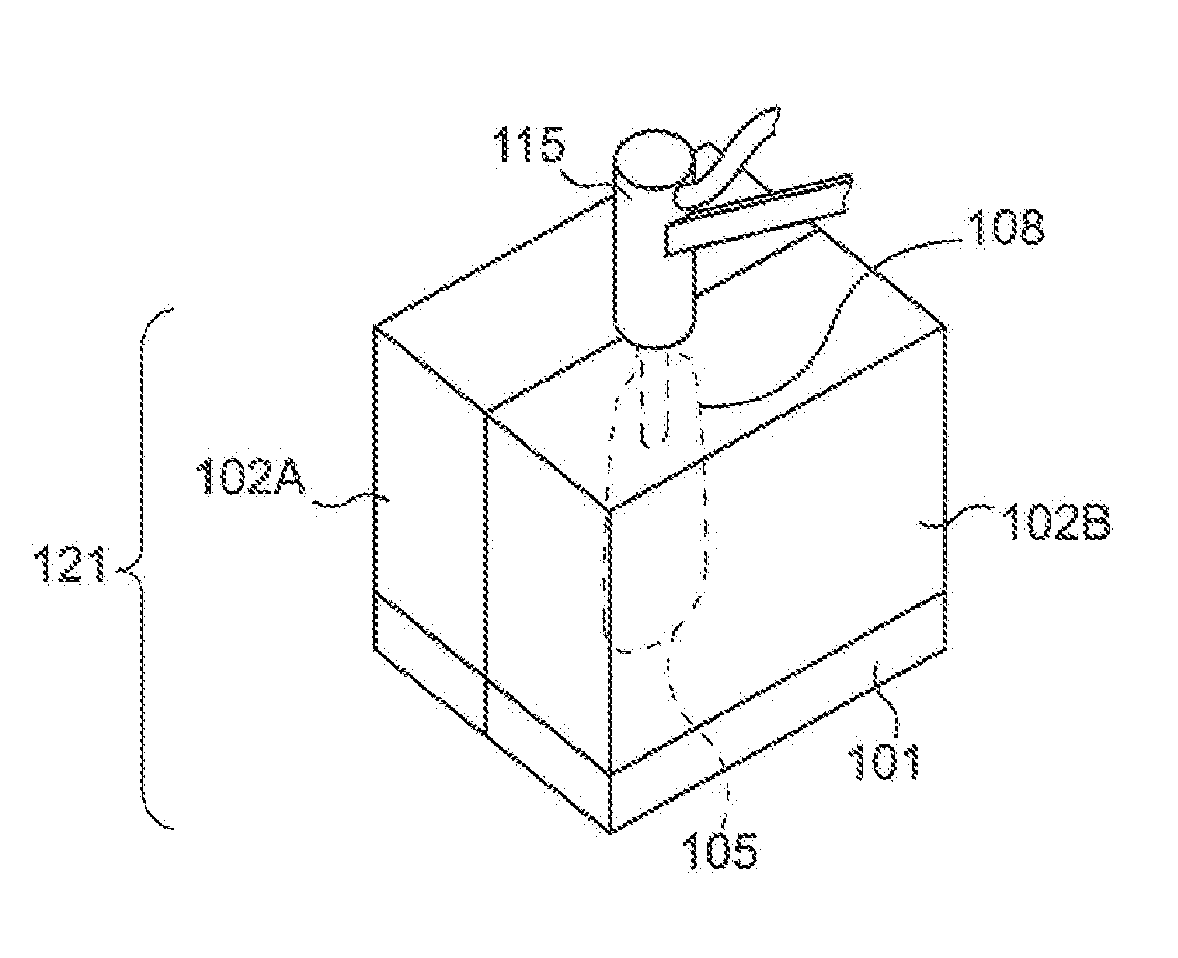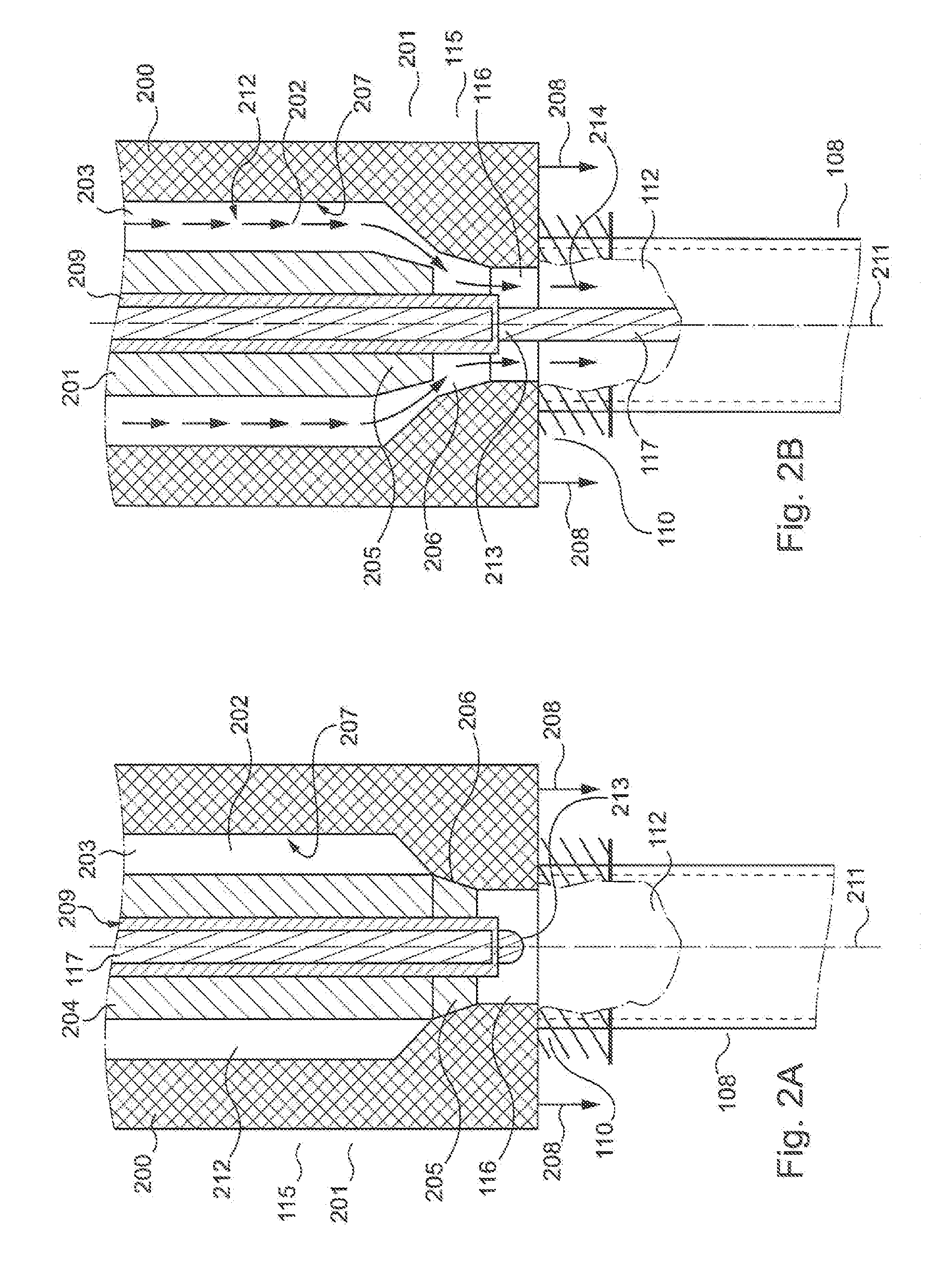Apparatus and method for fabricating and filling containers
a technology for fabricating and filling containers, applied in the directions of transportation and packaging, other domestic articles, packaging goods types, etc., can solve the problems of insufficient prevention, small amount of void space created by the displacement of the stretching rod, and inability to achieve the effect of preventing void space, ensuring the cleanliness of unimpeded flow, and improving control
- Summary
- Abstract
- Description
- Claims
- Application Information
AI Technical Summary
Benefits of technology
Problems solved by technology
Method used
Image
Examples
Embodiment Construction
[0032]FIGS. 1A and 1 B are perspective views of an exemplary stretch blow molding apparatus 100 according to an embodiment of the invention. FIG. 1A depicts the apparatus in a partially-exploded disposition. The apparatus 100 comprises a base mold segment 101 and the two lateral mold segments 102A and 102B. The base mold segment 101 is provided with a base depression 103 substantially defining the base of a container, while the lateral mold segments 102A and 102B are respectively provided with the lateral depressions 104A and 104B, each substantially defining half of the body of a container. The base depression 103 and lateral depressions 104 together form the mold cavity 105, which substantially defines the form of a container.
[0033]The lateral depressions 104A and 104B each communicate with a top face 106 of their respective lateral mold segments 102A and 102B, cooperating to form a mold hole 107 communicating with the mold cavity 105. Into the mold hole 107 is disposed a preform ...
PUM
| Property | Measurement | Unit |
|---|---|---|
| displacement | aaaaa | aaaaa |
| volume | aaaaa | aaaaa |
| pressure | aaaaa | aaaaa |
Abstract
Description
Claims
Application Information
 Login to View More
Login to View More - R&D
- Intellectual Property
- Life Sciences
- Materials
- Tech Scout
- Unparalleled Data Quality
- Higher Quality Content
- 60% Fewer Hallucinations
Browse by: Latest US Patents, China's latest patents, Technical Efficacy Thesaurus, Application Domain, Technology Topic, Popular Technical Reports.
© 2025 PatSnap. All rights reserved.Legal|Privacy policy|Modern Slavery Act Transparency Statement|Sitemap|About US| Contact US: help@patsnap.com



